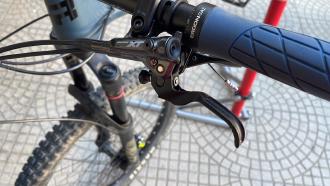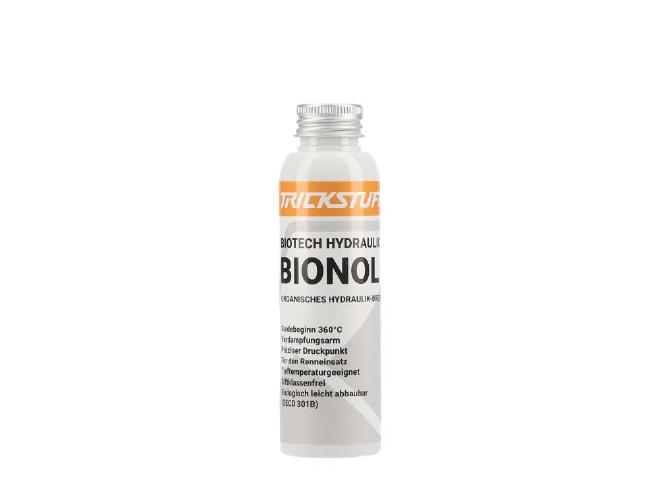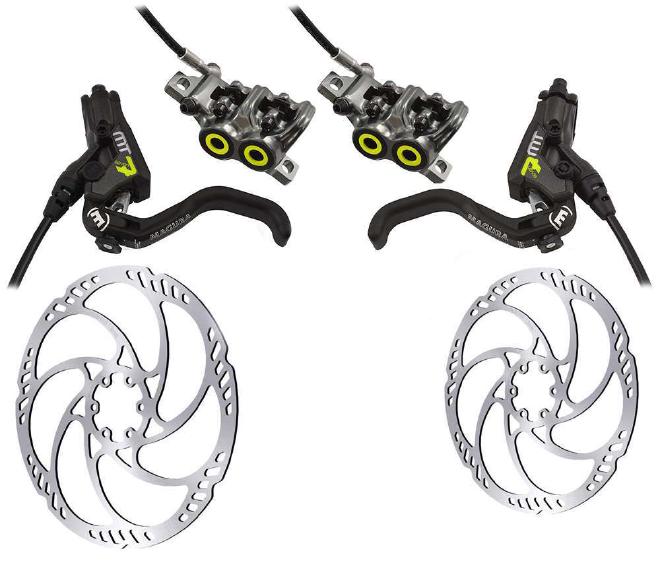DIY ShiGura brakes

In my last bike update post I spoke about the brake setup that replaced the SRAM Code R’s on my Transition Scout: a pair of Magura MT7 Pro’s.
I over-estimated their stopping power capabilities when coupled with Magura’s 180mm rotors, and found that on proper bike park/downhil tracks those brakes aren’t enough: they kept fading even after a fresh bleed.
Granted, my braking technique is not the best out there — and I’m working on improving it! — but the feeling of uncertainty of this brake setup made me realize something had to change.
I swapped the Magura 180mm rotors with a pair of 200mm Galfer Disc Wave paired with their e-Bike pads: day and night change in power and modulation.
The biggest technique mistake I do is using too much rear brake, and even with the 200mm rotors I still had fading issues.
Determined to solve this issues, I looked for answers on the Internet and discovered that I’m not alone in having issues with Magura, in particular their levers.
Luckily calipers are fine!
Bleeding Magura brakes is as physically taxing as climbing a 700 meters hill with 15% incline.
One has to screw a special bolt to the caliper, unscrew the plastic bleed screw positioned on the lever, do the bleed and screw everything back.
The main UX problem for me has been finding a way to avoid dropping liters and liters of oil on the floor while screwing back the caliper bolt.
Then you have to be extra careful while screwing the plastic bleed screw back on, because that thing is supposed to be tightened to 0.5 nm.
0.5 nm!
My (in)experience with brake bleeds taught me that to get a somewhat serviceable bleed off a Magura MT7 brake set it’s preferable to execute a full bleed instead of a simple lever bleed.
There’s lots of folks on YouTube and various forums suggesting to do a “lever vacuum”, so that you extract all the trapped air bubbles from the system.
To do so, you must unscrew the lever bleed screw, stick in the lever syringe, add some oil in it and just… pull a couple times.
I have serious doubts on the effectiveness of this method, given the stress that pulling a vacuum could have on the various gaskets around the caliper pistons.
While Shimano has designed the brake fluid paths inside the caliper and lever to respond better to lever bleeds, SRAM went further and designed a special caliper cap that spills exactly zero fluid: Magura, you have to step up your game.
In August I had 200mm 2.3mm rotors for Magura calipers, metallic pads for Magura MT7 calipers, good enough tubing and crap-level levers, so I did the most sensible thing a mountain biker with a software engineer background would do: build my own mineral oil-based brake Frankenstein!
I didn’t come up with this idea on my own, and learned a great deal on the interaction between various kinds of brake fluids and brands.
The main takeaway is that you can mix up everything you wish, as long as the brake fluid for which the two kits were conceived are the same.
I wanted to connect Shimano XT levers with Magura MT7 calipers, since both brands use mineral oil in their systems.
Hell, you could even run them off baby oil if you wanted to!
To achieve this Frankenstein conversion I had to find a pair of Shimano XT levers available online, not an easy feat in a market that’s recovering from COVID-19 related shortages.

To spice up the challenge I decided to replace the Magura Royal Blood brake fluid that comes stock on MT7’s for some Trickstuff Bionol , which is apparently made of canola oil and can withstand a great deal of heat before burning up — it’s also 100% harmless for trees and the likes, making it more appealing.
There’s a technical difference between the two systems: Shimano brake lines make use of a slightly smalle tube diameter than Maguras, and it’s advised to reuse their barb and olive kits to avoid oil leakage.
I used a “universal” kit from Alligator, and so far I recorded a great deal of zero leaks across both brake lines.
Once you joined the tubes with the levers it’s time for a full bleed: Magura joints on the caliper, Shimano plastic funnel on the lever.
The overall experience is much simpler — though I still spill some oil from the caliper joints when closing everything up — and now I can do lever bleeds that actually do something!
I brought this kit to the Amiata Freeride bike park, probably one of the closest thing we have to Whistler Bike Park in Italy.
One thing I immediately noticed is how the Shimano lever helps with brake modulation, you can really dose power in small bites instead of going on/off like the Magura lever does.
I believe this is partly due to the 1-finger blade design that Shimano uses, which is extremely successful among downhill and enduro enjoyers.
I am also happy to announce that within two day of riding park-level features and trails I experienced no brake fade at all — I seriously there’s something wrong with Shimano XT calipers that Magura ones are not subject to.
Or maybe it’s the brake fluid? Who knows.

In hindsight I should’ve upgraded to a Shimano XT kit instead of going the Magura route, reason being I think the latter are race-oriented while Shimano’s are forgiving and can withstand amateur-level abuse.
Still I’m happy I had the chance to wrench on hydraulic brake systems a bit: it infused me with confidence in my mechanic skills and made me realize I’m capable of doing much more than I think.
I also learned that one must never rush brake maintenance: the chances of doing something wrong are high, and this kind of stuff require love and care.
You don’t wanna find yourself in a no-brake-available situation while bombing downhills!